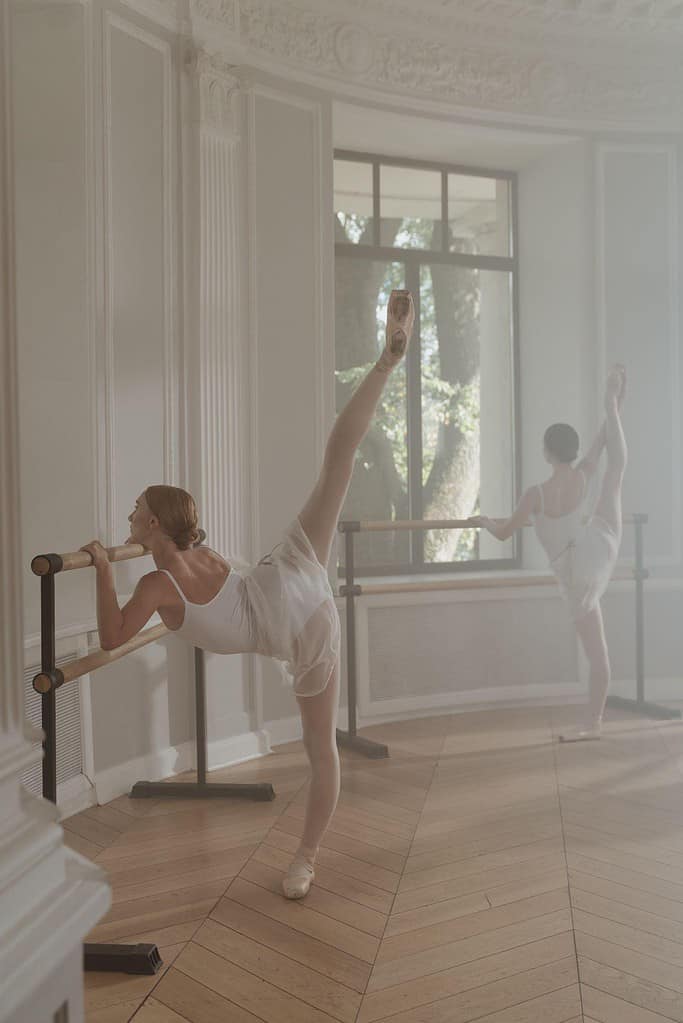7 Ballet Stretches for Improved Flexibility
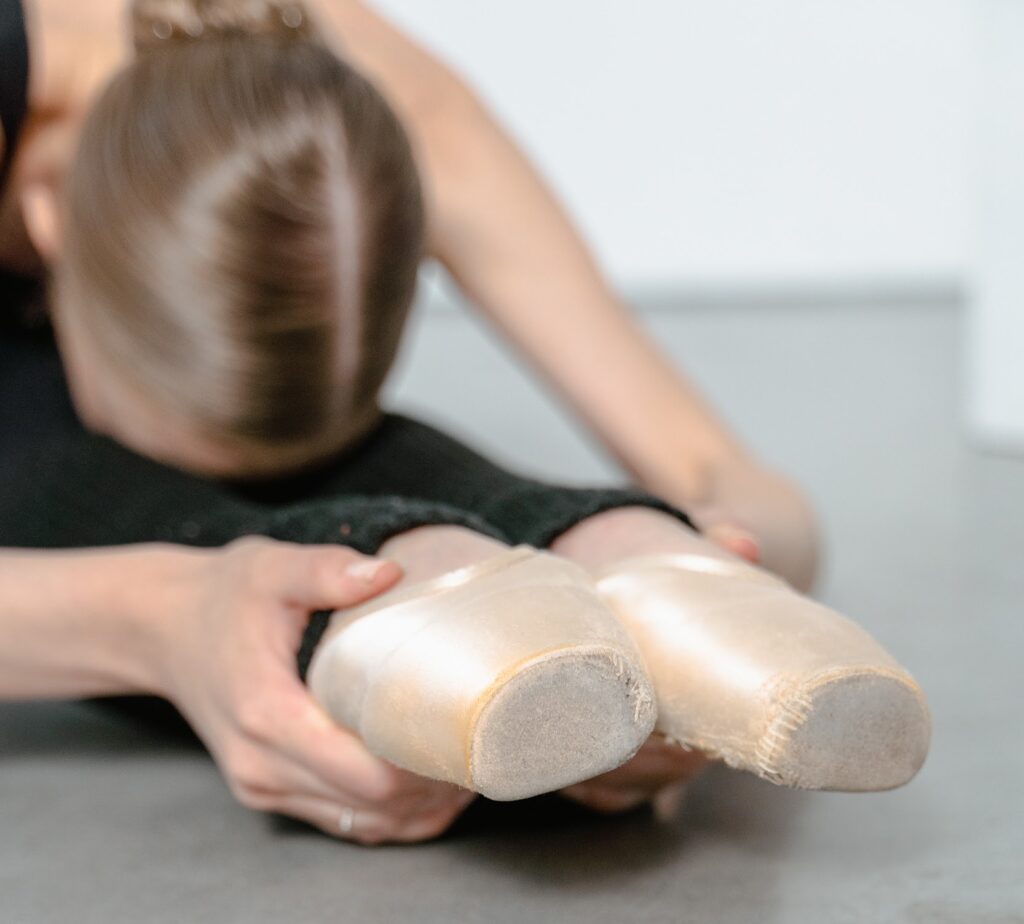
While some dancers may be naturally gifted with flexibility, others have to invest a substantial amount of effort performing ballet stretches to attain and sustain this level of elasticity.
Having a flexible body has many advantages for dancers.
Think stunning lines, exquisite developpes, and graceful arabesques.
Yet, flexibility goes beyond aesthetics.
It also provides dancer’s muscles with a vital element of elasticity, supporting a broader range of motion and offering injury prevention benefits.
But overstretching is a real DANGER.
Excessive stretching can make your muscles weaker and less capable of supporting the intricate movements needed in dance.
Don’t be misled into thinking that spending hours every day in oversplits will help you achieve your goals. Not only would that be uncomfortable, but it may have the opposite effect!
In this blog, I will show you 7 essential ballet stretches to improve your flexibility and highlight the importance of a stretching routine.
Disclaimer: This blog provides general information and discussions about health and related subjects. The information and other content provided in this blog, or in any linked materials, are not intended and should not be construed as medical advice, nor is the information a substitute for professional medical expertise or treatment.
WHAT ARE THE 7 ESSENTIAL BALLET STRETCHES TO IMPROVE YOUR FLEXIBILITY?
The seven essential ballet stretches to improve your flexibility are:
Caution:
When it comes to stretching, a slow and controlled approach is best. Be patient, and gradually build up to a particular stretch. If you ever feel sharp or intense pain during ballet stretches, it’s a signal to stop immediately.
BUTTERFLY STRETCH (EASY)
The Butterfly Stretch targets the hip adductors, improving flexibility and range of motion in the hip joints.
To perform the Butterfly Stretch:
Optional: To increase the intensity, forward fold your body over your knees.
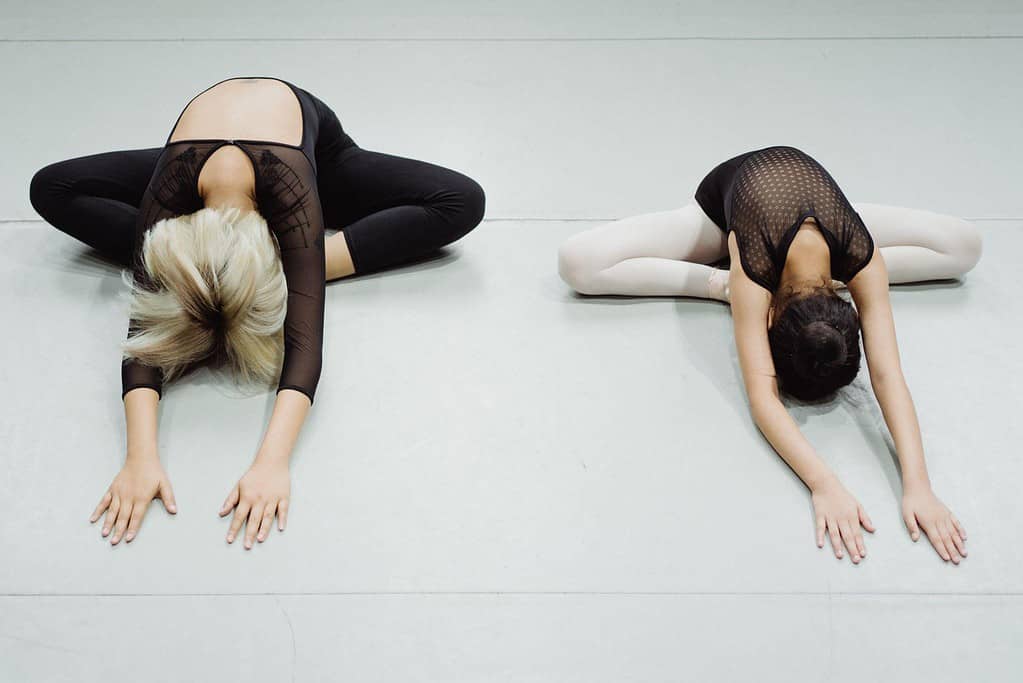
The Butterfly Stretch is particularly beneficial for ballet dancers who frequently work in a turned-out position.
This stretch helps to release tight hip flexors and stretches your inner thighs and groin.
MIDDLE SPLIT STRETCH (EASY)
The Middle Split Stretch helps to increase the flexibility of the hip adductors, hip flexors, and groin.
To perform the Middle Split stretch:

The Middle Split Stretch is ideal for dancers wanting to improve their leg extension and line.
It helps to increase the range of motion in your hip and pelvic area.
HIP FLEXOR STRETCH (EASY)
The Hip Flexor Stretch targets the muscles at the front of the hips (specifically the hip flexors), increasing the range of motion in the hips and pelvis.
To perform the Hip Flexor Stretch:
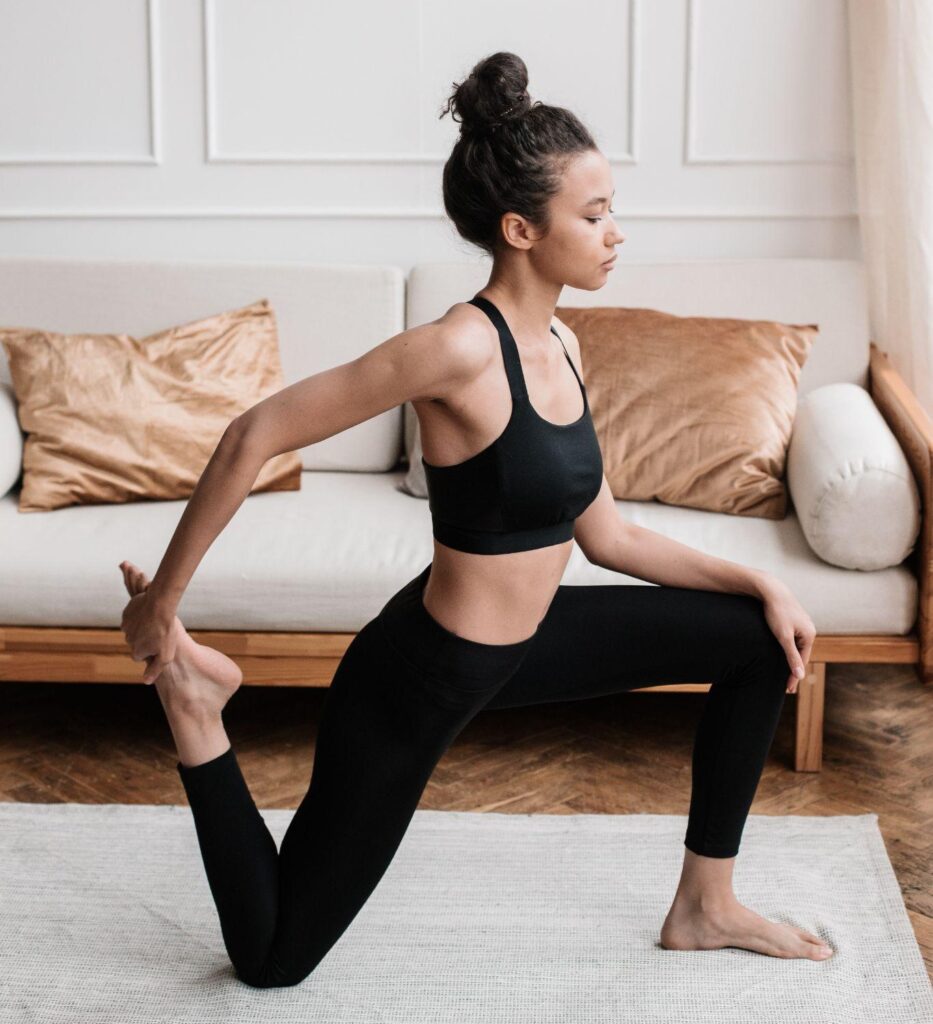
The Hip Flexor Stretch is great for dancers with tight hip flexors and supports better leg extension.
I recommend you perform this one daily.
LYING DOWN HAMSTRING STRETCH (INTERMEDIATE)
The Lying Down Hamstring Stretch targets the hamstring muscles, while also stretching the lower back, glutes, and calves.
Performing this stretch while lying on your back allows for a deeper stretch.
To perform the Lying Down Hamstring Stretch:
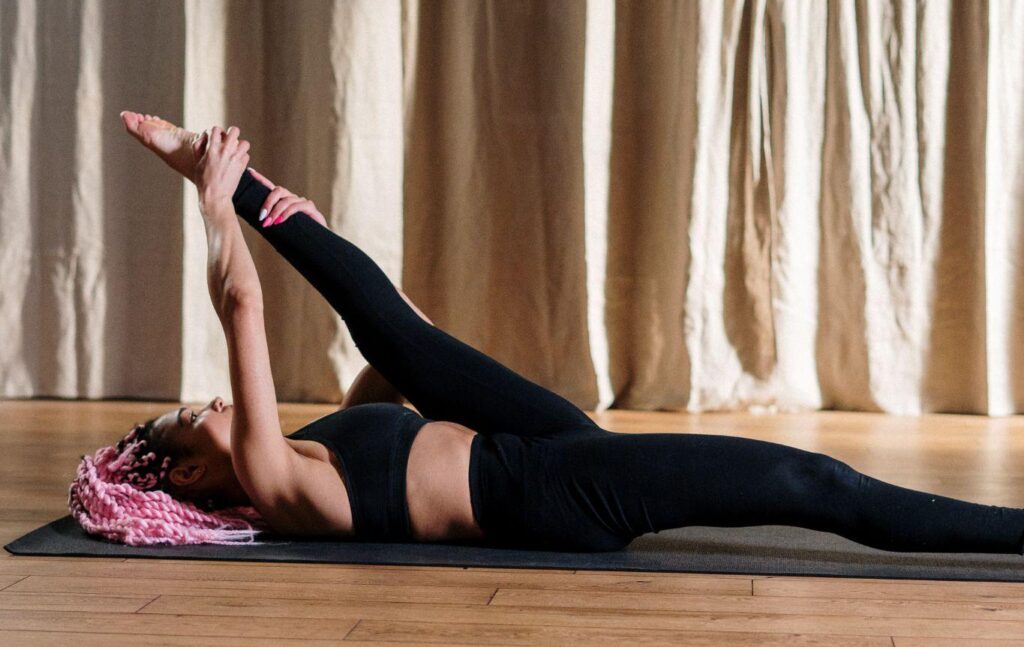
The Lying Down Hamstring Stretch is beneficial for dancers seeking to improve their leg extensions (ie. great for developpes, arabesques, and grand battements).
LEG STRETCH AT THE BARRE (INTERMEDIATE)
The Leg Stretch at the Barre Stretch involves using a ballet barre to assist in stretching the legs and improving flexibility.
Stretching can be done in various dance positions, including devant, a la seconde, and arabesque.
To perform the Leg Stretch at the Barre:
This stretch can be performed in a variety of ballet-related positions.
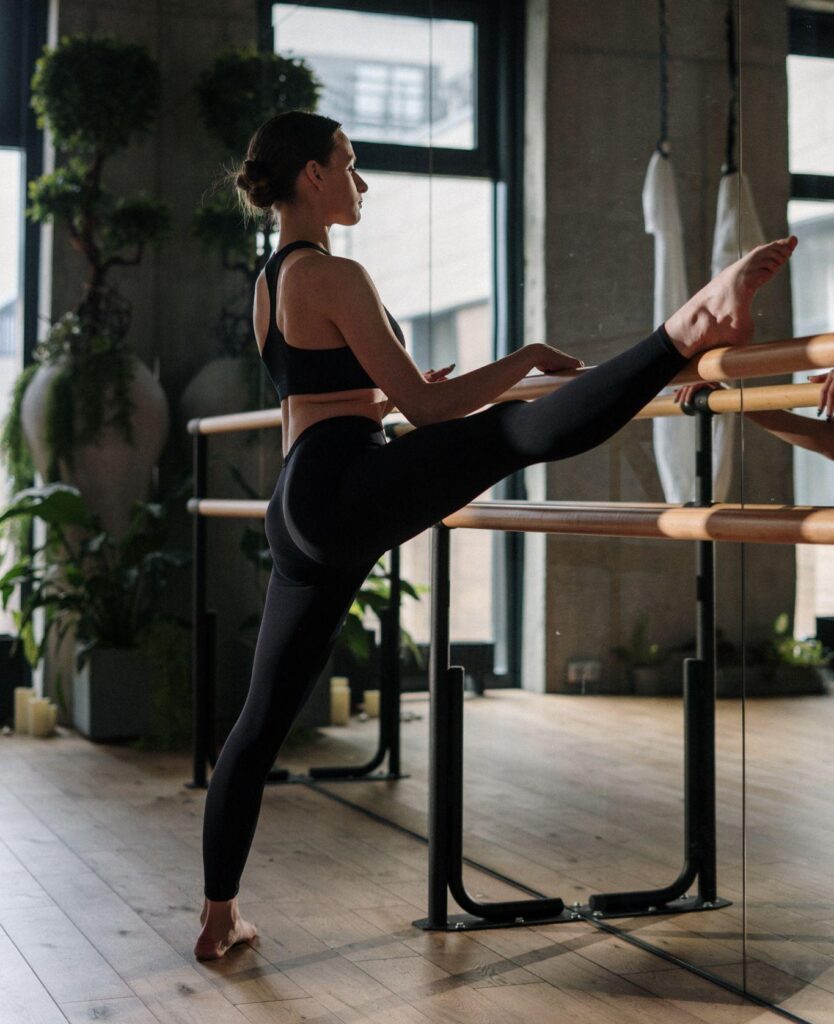
The Leg Stretch at the Barre allows dancers to work on their flexibility while maintaining a turned-out position, pointed feet, and proper alignment.
It replicates the movements commonly used in ballet class, making it an effective way to improve your range of motion whilst maintaining the correct form and technique.
BACK WHEEL STRETCH (HARD)
The Back Wheel Stretch targets the flexibility and strength of the spine, shoulders, and hip flexors (essential for back flexibility and improved posture).
To perform the Back Wheel Stretch:
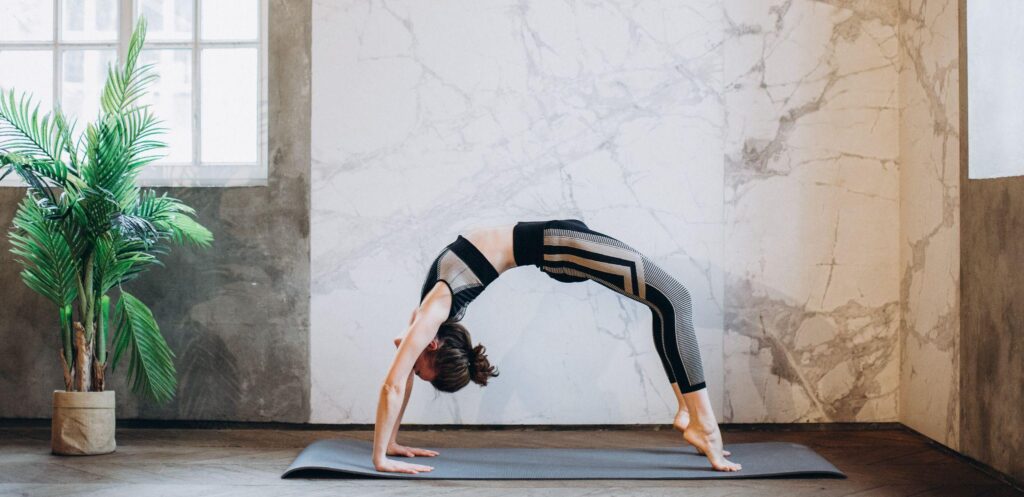
The Back Wheel Stretch helps you extend your range of motion.
It’s great for movements that involve arching or back extension (ie. arabesques and cambres).
OVER SPLIT STRETCH (HARD)
The Over Split Stretch is an advanced stretch that involves extending your leg beyond its natural range of motion.
The result is a split position that extends beyond 180 degrees.
To perform the Over Split Stretch:
Optional: Try using a prop such as a yoga block or chair, to increase the height of the split position.
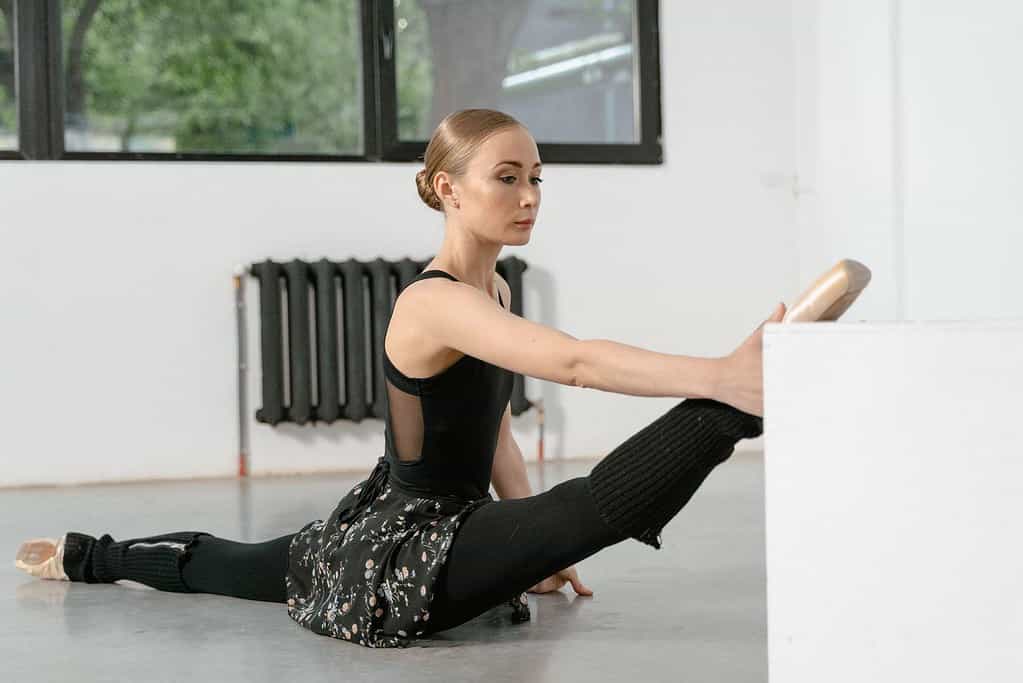
The Over Split Stretch is used to enhance leg flexibility and improve extensions (think beautiful stretched legs and graceful lines).
This stretch is recommended for dancers who no longer feel a sufficient stretch in a standard split position.
Always approach oversplits with a degree of caution and gradually increase the height of the front leg.
EFFECTIVE BALLET STRETCHING TIPS FOR BEGINNERS
TIP 1 – STATIC BALLET STRETCHES VS DYNAMIC BALLET STRETCHES
Static ballet stretches and dynamic ballet stretches are two distinct techniques used by dancers to improve their flexibility.
Static ballet stretches involves holding a stretch for an extended period while the body is at rest.
This method aims to gradually lengthen muscle fibres, and is ideal for an end-of-day wind down after a full day of dancing (think stretching in front of the tv).
Examples include:
Dynamic ballet stretches involves active, rhythmic movements that guide the body through a range of motion (similar to dance movements).
Dynamic ballet stretches is an excellent choice for warming up the body, elevating the heart rate, increasing blood flow to the muscles, and preparing the body to be actively engaged in dance.
Examples include:
Each stretching approach provides unique benefits based on your needs throughout the day.
To get the most out of your stretching routine, consider a combination of both static and dynamic stretching, and determine what works best for your body to achieve your desired level of flexibility.
TIP 2 – DON’T DISMISS STRENGTHENING
Strengthening can give dancers the necessary balance in the body.
It significantly reduces the risk of overstretching or overloading specific muscle groups by providing two things: support and stability.
Consider this scenario: You´ve been diligently stretching for weeks, but haven’t noticed any real improvement in your extensions.
The reason may lie in the fact that while your hamstrings possess the necessary elasticity, you haven’t developed the strength to support your leg during a developpe while standing.
This serves as a good example of how strengthening specific muscle groups, such as your core, hip flexors, and quadriceps can help increase the flexibility of your hamstrings.
As dancers strive to achieve greater flexibility, strength training becomes a key component in developing that superhuman dance body.
TIP 3 – REPETITION, REPETITION, REPETITION
Flexibility is a journey.
Like any skill, flexibility isn’t achieved in a single stretching session.
It requires A LOT of practice and dedication, much like the art of dance itself.
Consistency and repetition will become your two most loyal companions on this journey.
Regular stretching routines, focusing on tight muscles and stiffness, can lead to significant improvements in flexibility OVER TIME.
Prioritising areas of the body in need of stretching, rather than those areas already flexible, can help dancers lengthen their muscles and improve their extension and lines.
But don’t be discouraged if you don’t see immediate results. The magic happens through persistence and repetition.
7 ESSENTIAL BALLET STRETCHES TO IMPROVE FLEXIBILITY FAQs
HOW CAN I IMPROVE MY BALLET FLEXIBILITY?
Flexibility can be improved through consistent practice, stretching techniques, and the incorporation of strength training.
With a combination of all these elements, dancers can strive towards attaining their specific goals.
However, it’s important to bear in mind that each individual´s body is unique.
When it comes to flexibility, we can improve the elasticity of our muscles and expand our range of motion.
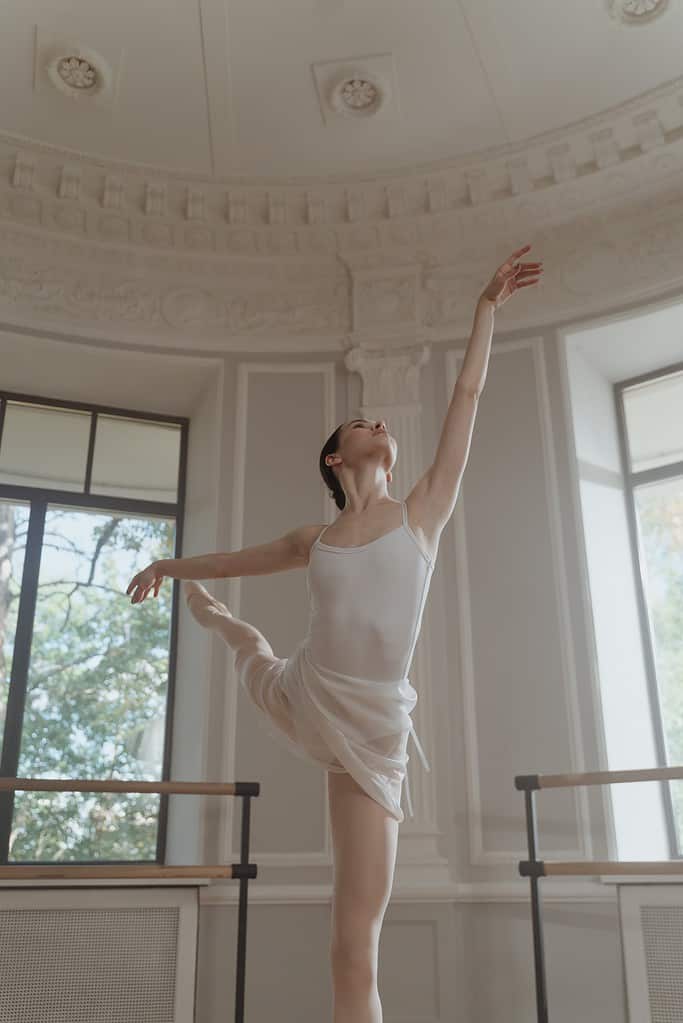
Unfortunately, the fundamental structure of our bones remains beyond our ability to change, and therefore some dancers will have greater possibilities, with their level of flexibility, than others.
With that being said, if you never start, you´ll never discover your true potential.
HOW OFTEN SHOULD I STRETCH?
Stretching in dance varies from person to person, as each dancer is different.
It’s essential to include stretching in both warm-up and cool-down routines, and after any physical exercise (dance or conditioning), to enhance performance and reduce the risk of injury.
Whether the goal is to improve extensions, relieve muscle soreness, or boost flexibility, a well-designed stretching routine is a vital component of every dancer´s practice, regardless of their current level of flexibility.
Remember, your body knows best!
Pay attention to how your muscles are feeling and let your body’s cues determine how often you need to stretch.
WHEN IS THE BEST TIME TO STRETCH FOR BALLET?
Here’s a guide to assist you in determining when to stretch:
WHAT ARE THE COMMON MISTAKES IN BALLET STRETCHING?
Ballet stretching is a gradual process. There are no shortcuts or quick tricks to achieve your desired flexibility.
It’s important to listen to your body.
Avoid pushing too hard, and incorporate proper technique and alignment when stretching.
Here are some common stretching mistakes to avoid:
WRAP UP
It’s quite rare to hear a dancer say ‘I don’t stretch’.
Flexibility and ballet stretches are integral to a dancer’s success, with the rigorous demands and high aesthetic standards.
Dancers rely on flexibility not just for impressive movements but also to help prevent injuries.
Flexibility is something that can be improved, no matter what age or level. All you need is dedication and a bit of effort.
What dancer doesn’t want to hold their legs above their head, right?
